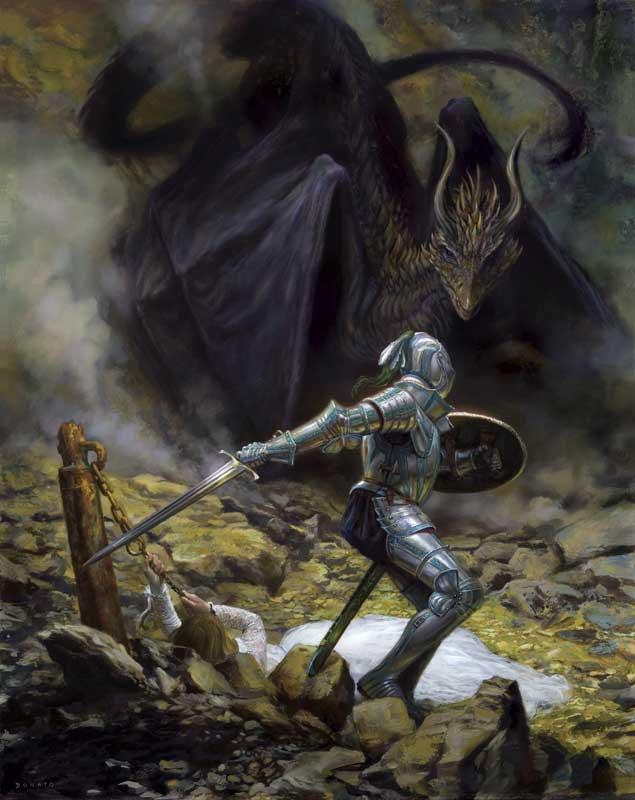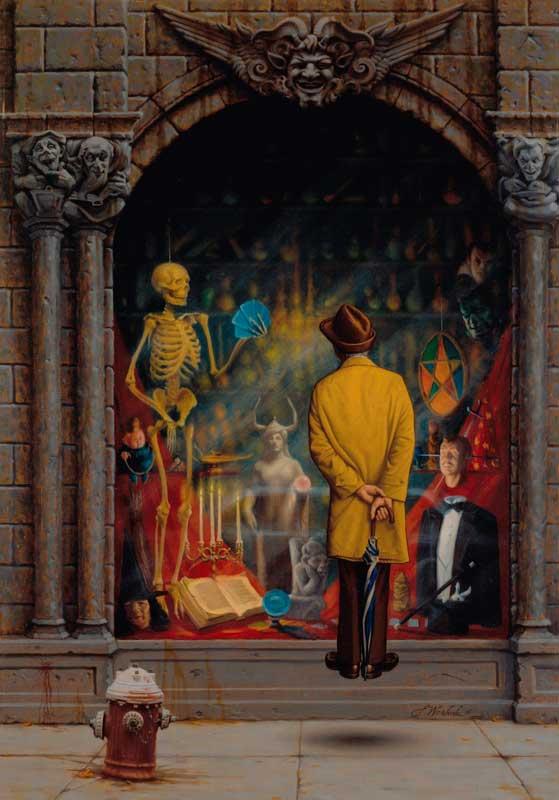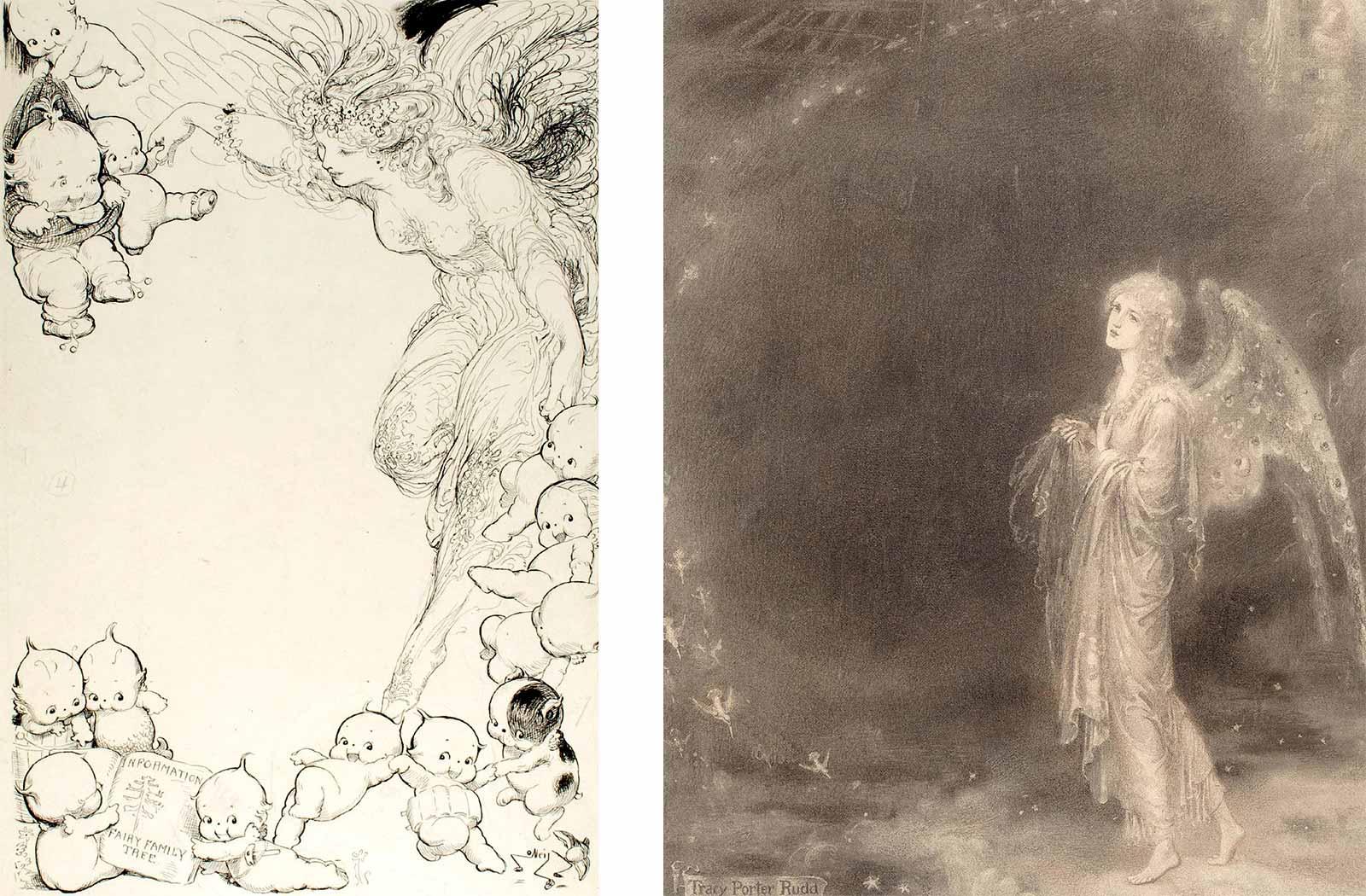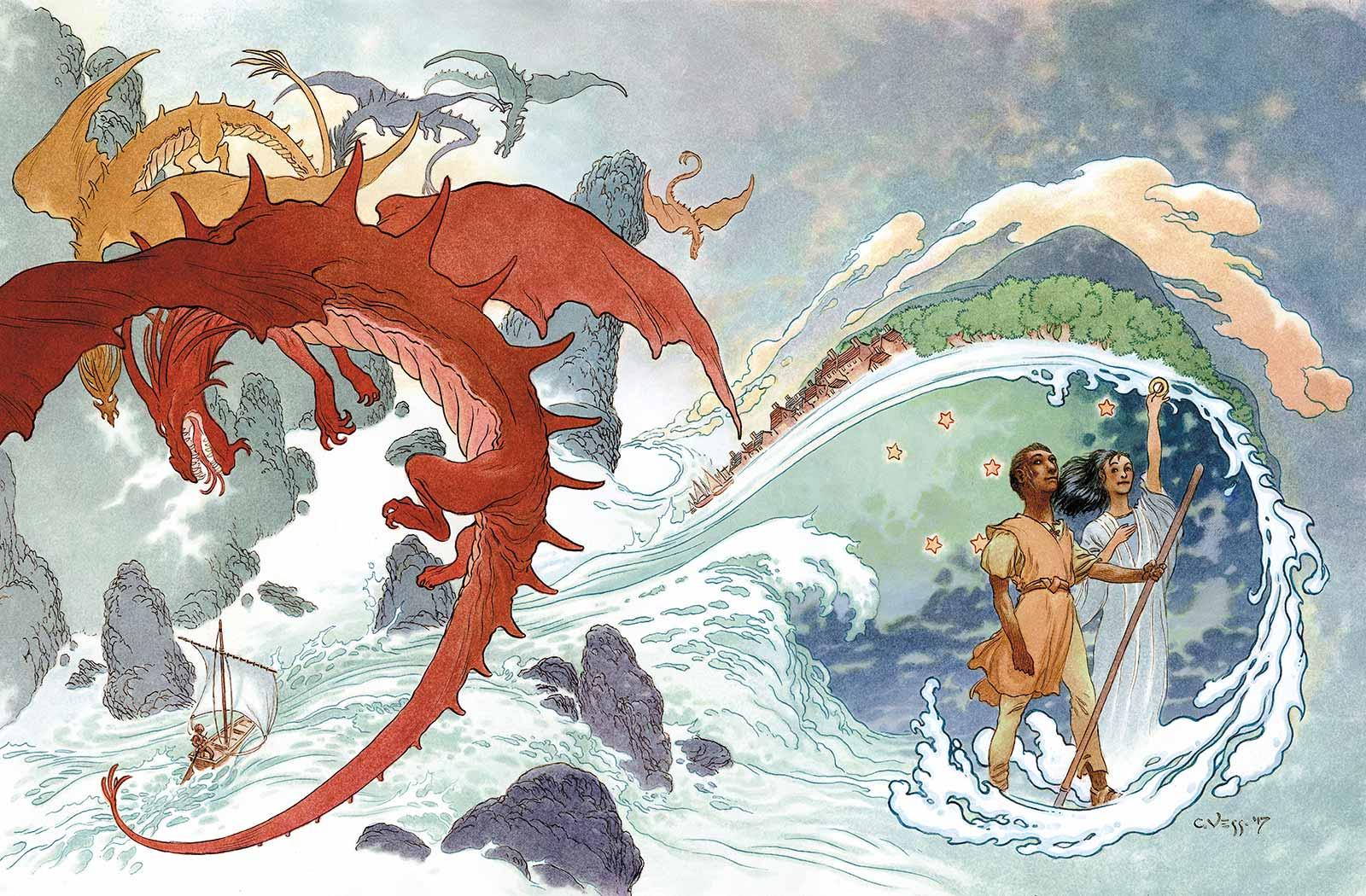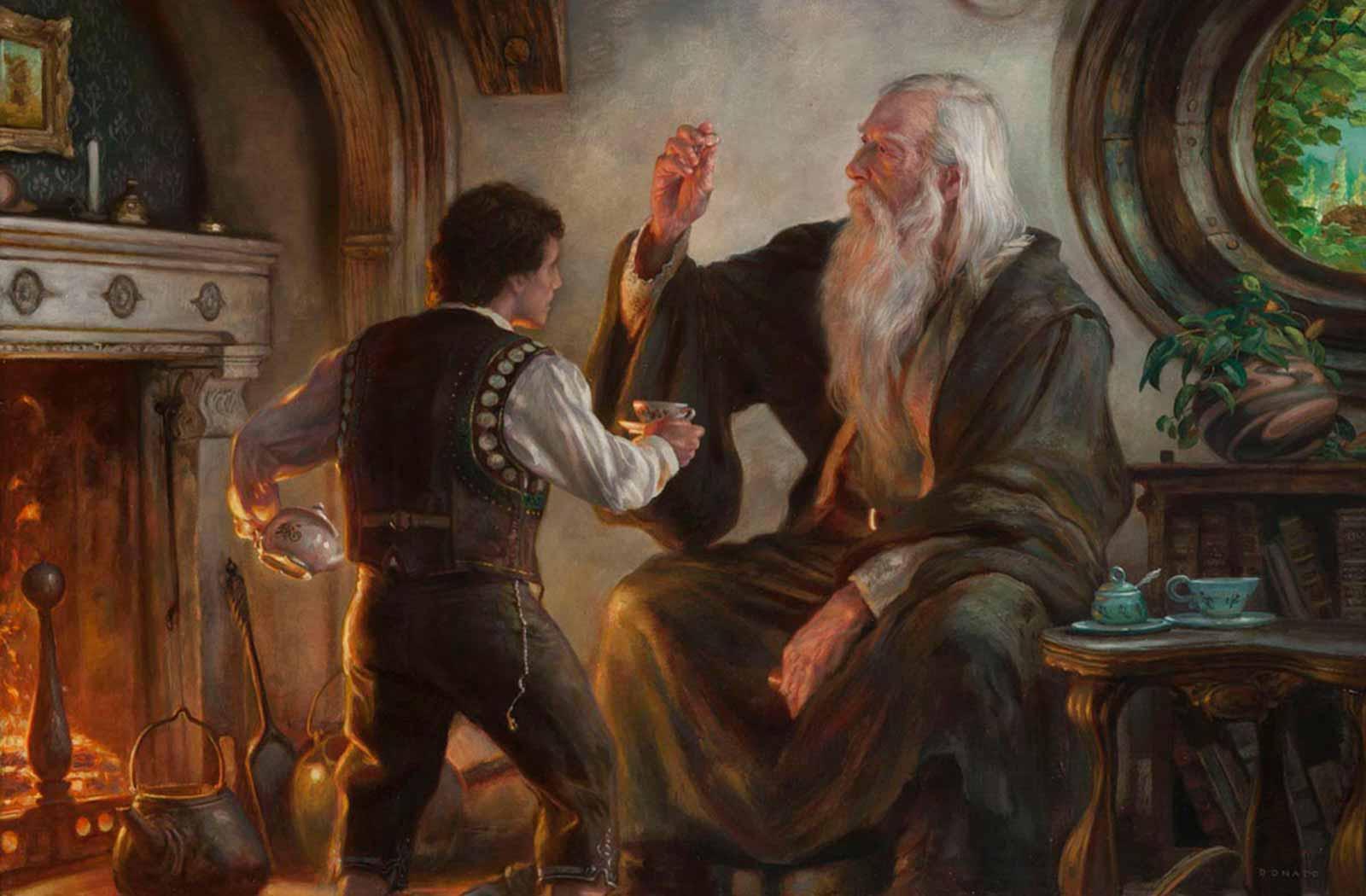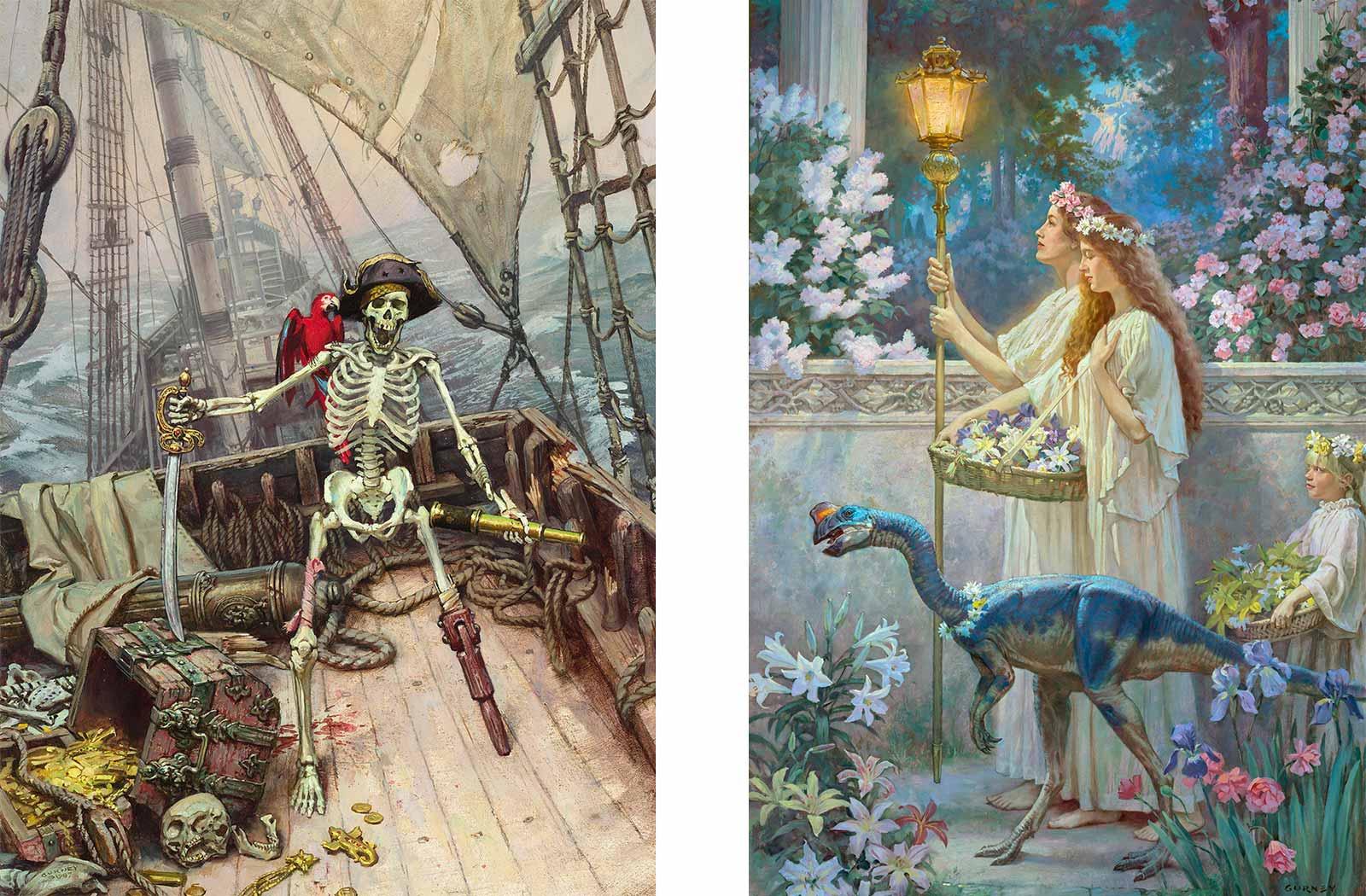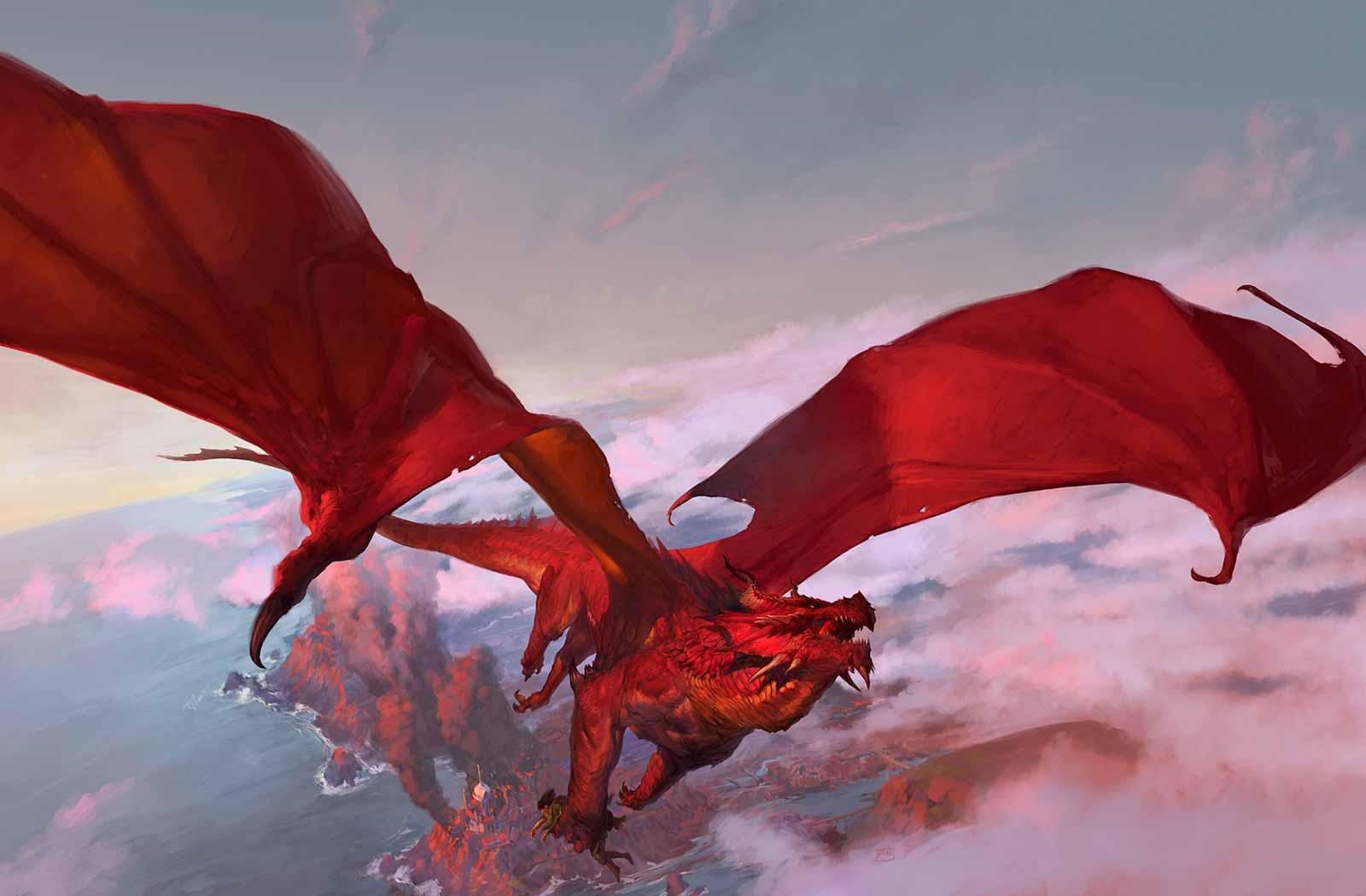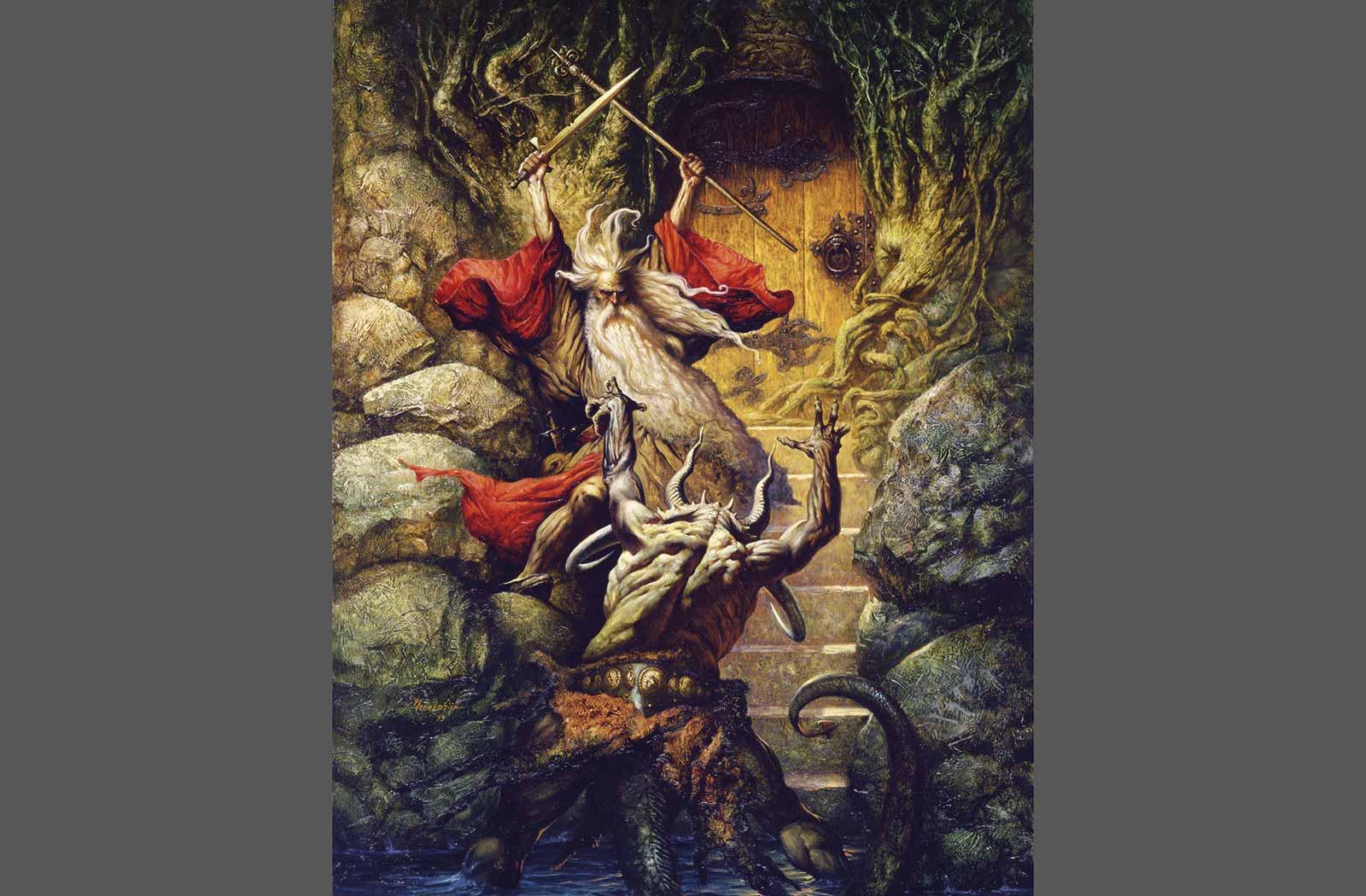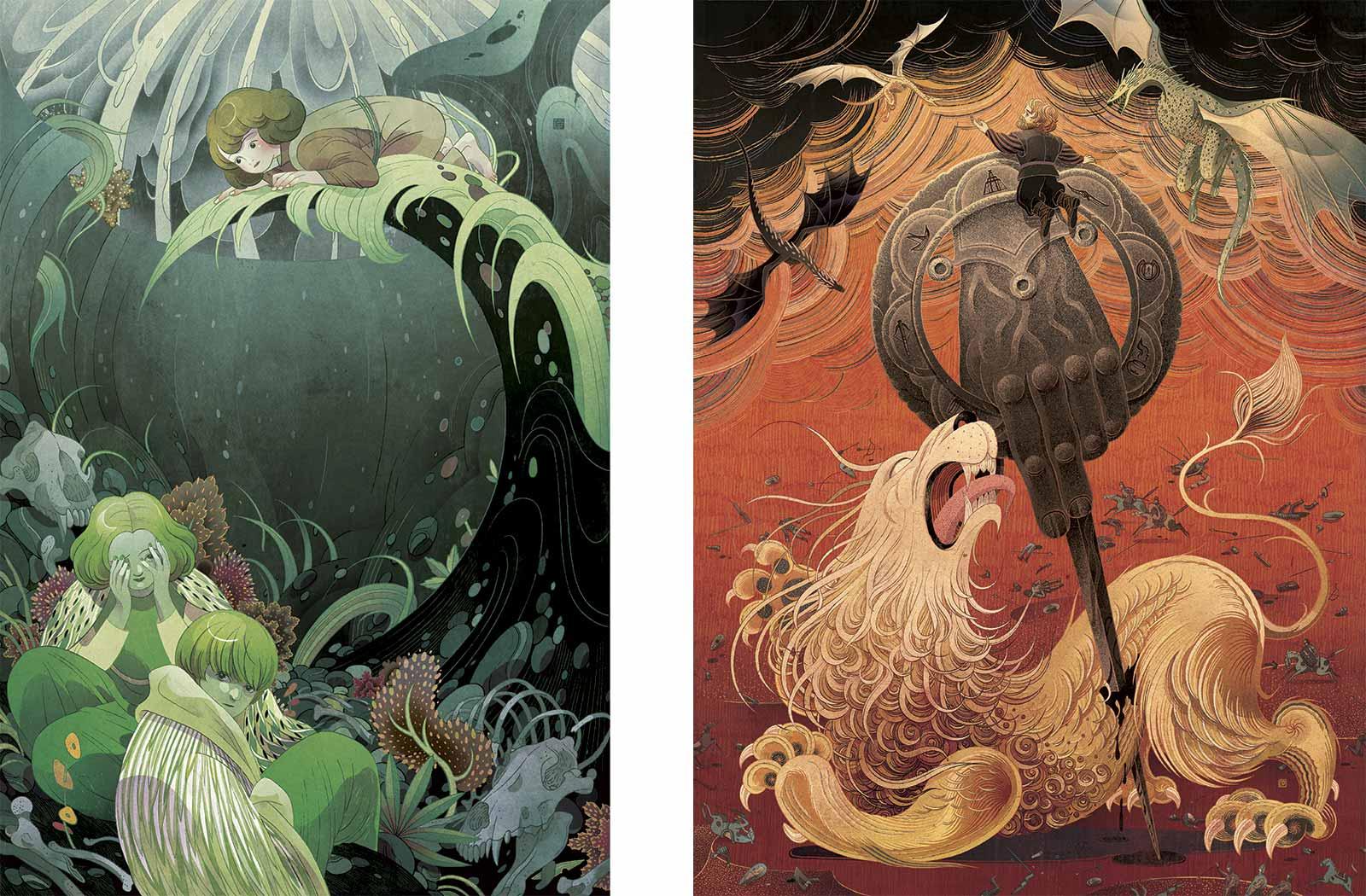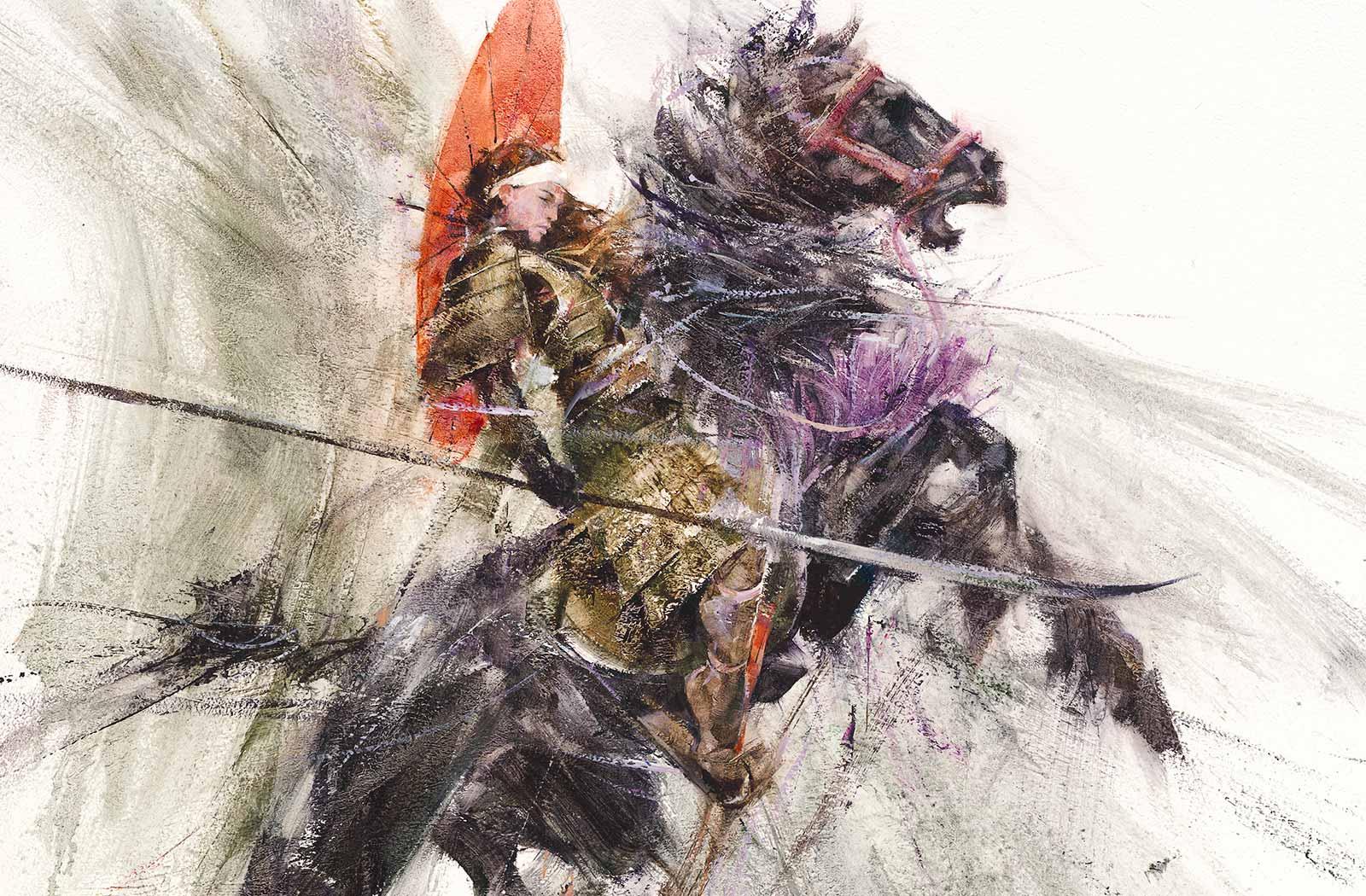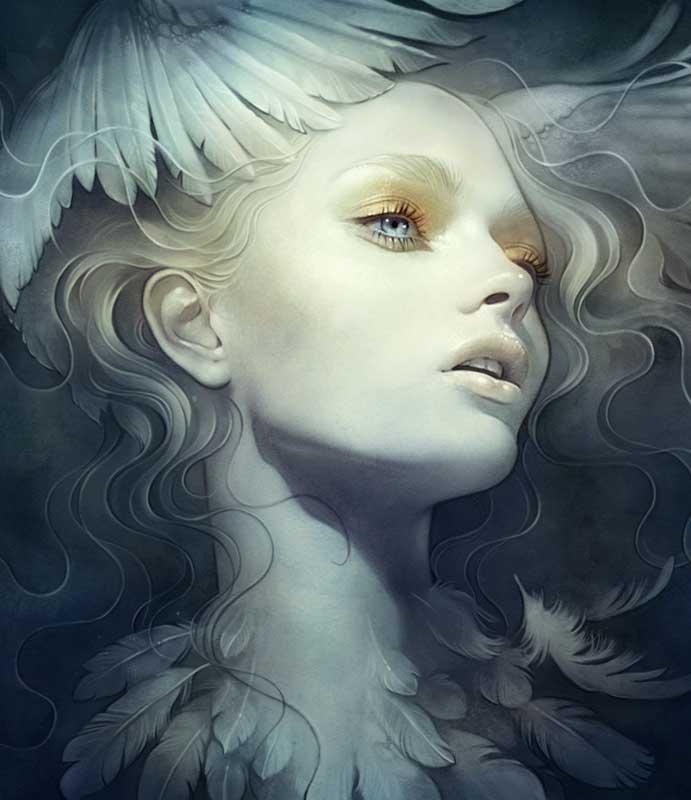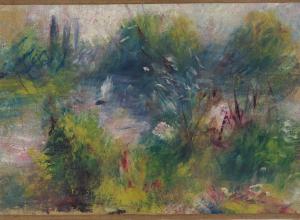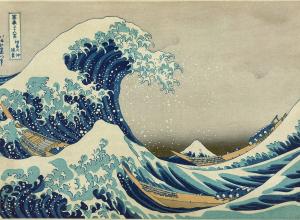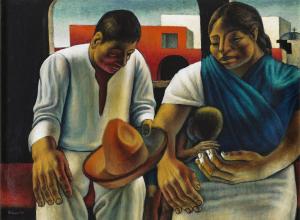A knight in shining armor wields his sword against a horned dragon about to roast its prey. It’s a timeless image, rendered in stories and artwork for a thousand years, but reimagined by top fantasy artist Donato Giancola in his St. George and the Dragon, a classical-style painting from 2010 that heralds Enchanted: A History of Fantasy Illustration a new exhibition at the Norman Rockwell Museum (NRM) in Stockbridge, Massachusetts, through October 31.
“I thought that this really set up the exhibit quite well because it’s got the archetypal images here of the knight and the dragon and the historical reference between then and now,” said curator Jesse Kowalski during a recent tour through the long-awaited exhibition.
Dragons are everywhere, perhaps none so famous as the one depicted in the 1977 painting used on the cover of the very first Dungeons & Dragons game. It’s the piece Kowalski said he is most excited to have in the show, as this is the first time the painting is on view to the public.
And Here There Be Dragons, a 2018 work on paper made by Hugo Award winner Charles Vess for the cover of the fiftieth-anniversary edition of Ursula K. Le Guin’s The Books of Earthsea: The Complete Illustrated Edition, is particularly noteworthy because Vess illustrated Le Guin’s characters the way she desired—as people of color. “Before she died, she finally got to see them the way she wanted them,” Kowalski said.





